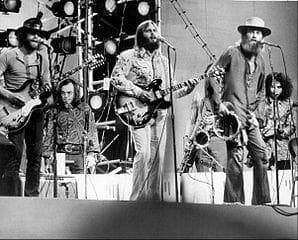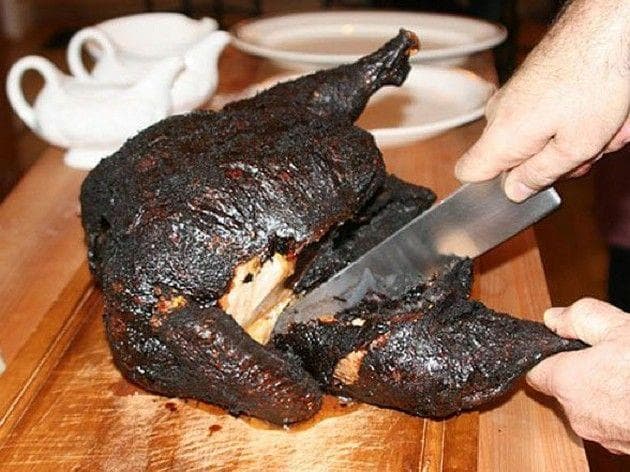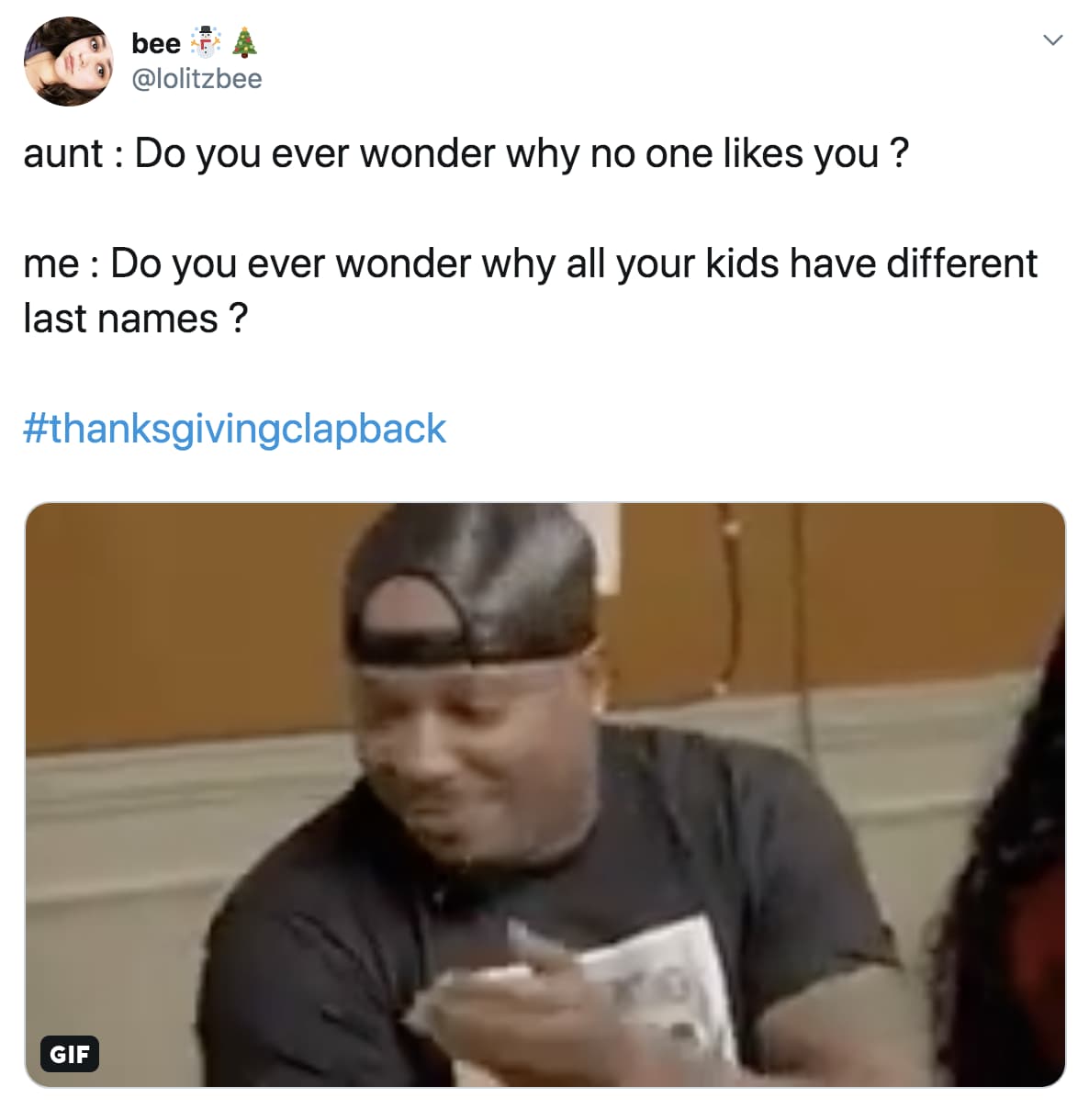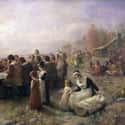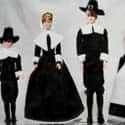-
(#1) Thanksgiving Has Been Celebrated Every Year Since 1621
THE MYTH: Thanksgiving has been celebrated every year since its first occurrence as a joint feast between Pilgrims and Indians.
THE REALITY: Up until the 1940’s, Thanksgiving had a spotty history of being celebrated. After the first Thanksgiving, commonly thought to take place in late September or early October, there were periodic celebrations of thanksgiving for good harvests among the 13 Colonies, and the First National Proclamation of Thanksgiving was given in 1777.
Up until the outbreak of the Civil War, there were a random assortment of "national days of prayer, humiliation, and thanksgiving.” Some presidents issued them every year, some never did.
-
(#2) Thanksgiving is Always the 4th Thursday in November
THE MYTH: Thanksgiving has always been celebrated on the 4th Thursday of November.
THE REALITY: Thanksgiving was held on a wide range of days in November until the Civil War. Then, as a symbol of national unity, President Lincoln proclaimed a national Thanksgiving Day, to be celebrated on the final Thursday in November 1863. Subsequent Presidents continued these declarations, and President Roosevelt solidified the holiday as taking place on the fourth Thursday of November in 1939.
November had five Thursdays that year, and Roosevelt didn’t want retailers to miss out on a week of Christmas sales. Even for a few years after that, the holiday took place on the next-to-last Thursday of the month, and it was only in 1941 that Roosevelt signed a federal law making the fourth Thursday in November the official day Thanksgiving would be celebrated.
-
(#3) Pilgrim Clothing
THE MYTH: Pilgrims wore their usual clothing of black and white suits, and buckled tall hats and shoes.
THE REALITY: This was actually a popular style of clothing in England, but not until the 1700s. It made its way into modern (at the time) depictions of the first settlers in the Americas, but it’s not what they actually wore. Shiny metal buckles would be far too expensive to wear simply as affectations, and black and white garb, also expensive to make, would have been reserved for more somber church services on Sundays.
The other days of the week, early American settlers donned the motley and colorful clothes of people who wore whatever they grabbed before they set off across the ocean. -
(#4) Dining in Gratitude
THE MYTH: The first Thanksgiving was about two different peoples coming together in gratitude.
THE REALITY: The first communal dinner between settlers and natives was actually a harvest festival. Any organized giving of thanks to God would have been a strictly religious service that was for white people only – and with no frivolity or joy allowed.
It’s far more likely that the settlers were enjoying the feasting and games that celebrated a good harvest, when the natives came by, drawn by noise and shooting. They were allowed to stay, and a myth was born.
-
(#5) A Huge Sit-Down Dinner
THE MYTH: Natives and pilgrims sat down to dinner together at a huge table groaning with food and utensils.
THE REALITY: The harvest festival of 1621 was a three-day affair, with people coming and going as they pleased, eating wherever they found room, probably with their hands. The colonists in the New World certainly didn’t bring fancy china and silver with them, and would have made food that could be picked up and carried around.
-
(#6) Turkey Makes You Sleepy
THE MYTH: The tryptophan in turkey makes you sleepy.
THE REALITY: This is technically true, but not in a practical sense. The tryptophan in turkey does help create serotonin, which is a key hormone in regulating sleep. But the turkey would need to be eaten on an empty stomach, and won’t actually reach your brain if you eat too much other food.
The sleepy feeling from eating a lot of turkey is more likely a combination of confirmation bias, exhaustion from a long day of being around family, alcohol consumption, and the general sleepiness that comes from eating too much and needing blood diverted from the brain to the digestive system.
-
(#7) The Thanksgiving Menu
THE MYTH: We eat turkey, cranberry sauce, stuffing, and pumpkin pie on Thanksgiving because the Pilgrims ate it.
THE REALITY: Our traditional Thanksgiving menu is based much more on what’s generally served at New England fall festivals, and has become greatly customized by region. Depictions of the original Thanksgiving include mentions of fowl, but not turkey in general. Pumpkin might have been served, but not in any kind of congealed pie form, while local vegetables and fish would have had a prominent place at the feast.
And, sweet potatoes weren’t introduced into American diets until long after the Pilgrims landed in New England, being popularized by Spanish settlers returning to Europe from South America.
-
(#8) Truman's Turkey Pardon
THE MYTH: Harry Truman was the first U.S. President to offer an official pardon of a turkey, choosing from two birds to be saved in 1947.
THE REALITY: This is one of the more common variations on an urban legend that goes around every year. It's partially true, but mostly false. 1947 was the first year that a free turkey was supplied to the White House, but the bird was for Christmas, not Thanksgiving, and it wasn't pardoned, it was eaten by the First Family.
While several presidents jokingly referred to turkeys they weren’t going to eat as being “pardoned,” the first president to actually pardon a turkey in a White House ceremony was George H. W. Bush in 1989.
-
(#9) Thanksgiving False Flag Attack
THE MYTH: The U.S. government is planning a Thanksgiving false flag attack to advance their agenda of taking away our rights and/or starting various wars.
THE REALITY: You can go back to 2008 to find various declarations that a massive false flag attack was going to take place on Thanksgiving of that year. The same vague conspiracy theory is rehashed every year, and is never mentioned when it doesn't happen.
-
(#10) Obama's Pardoned Turkey was Killed Anyway
THE MYTH: A turkey that had been pardoned by President Obama was put down anyway.
THE REALITY: In a sense, all pardoned turkeys eventually die. But it is true that the turkey pardoned in 2012 by President Obama, named Cobbler, was euthanized the next summer. The reason for this is simple: it was dying anyway, as the turkeys bred for consumption on Thanksgiving are meant to only live a few years. All of the pardoned turkeys die soon after their pardoning ceremony, which is strictly for show.
-
(#11) Stealth Halal Turkeys
THE MYTH: Turkey companies are bowing to pressure from Muslims and secretly giving freedom-loving Americans halal birds killed in compliance with Islamic dietary laws.
THE REALITY: The “stealth halal turkey” meme originates with the writer and noted opponent of all things Islam, Pamela Geller. On her website, americanthinker.com, Geller writes of militant Islam “on the march” as personified by turkeys being slaughtered to confirm to Islamic halal specifications. Geller reasoned that we were all secretly eating terrorist turkey, and to boycott Butterball specifically.
However, Geller misses a number of points in her ramble, the least of which is that Muslim dietary laws are almost exactly the same as Jewish dietary laws, and few people outside of the most ardent white supremacists would balk at the idea of eating a turkey that happens to be slaughtered in a kosher method.
While Butterball does certify some of its turkeys kosher, it would make little sense for all Thanksgiving turkeys to be certified either kosher or halal, as this would drive the price up. Also, eating meat that happens to be halal doesn’t make one Muslim, anymore than eating meat that happens to be kosher makes one Jewish.
-
(#12) Black Friday is the Most Lucrative Shopping Day of the Year
THE MYTH: Black Friday is the most lucrative retail shopping day of the year.
THE REALITY: Despite the massive media hype over post-Thanksgiving sales, stampedes, and people humiliating themselves for 20% off a Blu-ray player, Black Friday wasn’t always the most lucrative day of the shopping season. The days actually leading up to Christmas see far more sales volume, and up until 2003, the Saturday before Christmas usually won the “prize” of seeing more dollars spent than any other day.
In fact, before 2002, Black Friday never came in higher than 4th. But the relentless drive to lower prices and get more people in stores earlier finally worked, and Black Friday did become the busiest shopping day of the year in 2003, a dubious honor it’s held every year since, except 2004. The days leading up to Christmas still see massive spending, though.
-
(#13) Black Friday's Name
THE MYTH: Black Friday got its name from either being the day slaves were freed or the day stores went into the black for the year.
THE REALITY: The “Black Friday” name is one of those things that nobody can quite explain the origins of, though we know quite a bit about where it didn’t come from. For one thing, it has absolutely nothing to do with slaves. It was first referenced in a 1951 newspaper article, and didn’t even refer to shopping, only to being a day when numerous employees called in sick.
It later was used derisively in Philadelphia to refer to the giant crowds and traffic jams that resulted from post-Thanksgiving shopping. And the reference to stores being finally being in the black didn’t appear in the media until the 90s, long after the term had passed into common vernacular.
New Random Displays Display All By Ranking
About This Tool
The 4th Thursday in November is the traditional American Thanksgiving Day. For all Americans, the importance of Thanksgiving is second only to Christmas. This is a day of gratitude, people will go to church to pray and thank God for gifts according to the custom. Families gather together to share a delicious Thanksgiving meal. Various carnivals will be held across the country.
Thanksgiving is not just for Americans. The most important thing before celebrating the holiday is to know how it came into being. The origin of Thanksgiving can be traced back to the beginning of American history. The random tool tells 13 interesting Thanksgiving myths and legends that you will be interested in.
Our data comes from Ranker, If you want to participate in the ranking of items displayed on this page, please click here.

